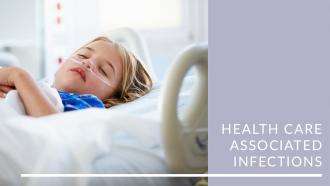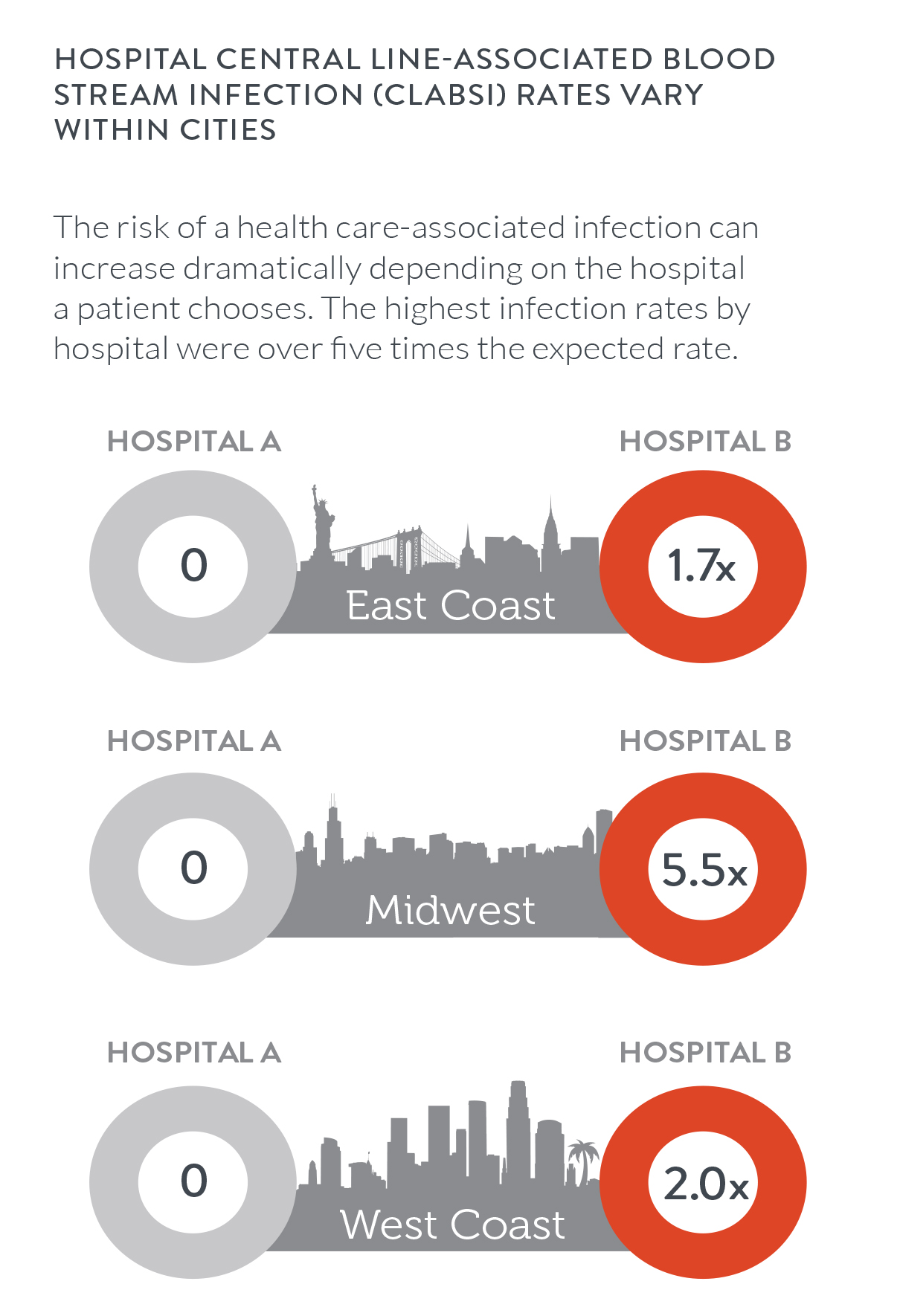
Though hospitals are making strides in avoiding central line-associated blood stream infections (CLABSIs) and catheter-associated urinary tract infections (CAUTIs), a report released today shows patients are still experiencing these serious, and sometimes fatal, infections too frequently.
The report, Health Care-Associated Infections, is the first in a series of five in-depth reports analyzing current health care safety trends in the United States, as revealed by infection data collected by The Leapfrog Group, and assembled and analyzed by Castlight Health.
“The good news is that a record number of hospitals make their infection rates public, which shows commendable transparency and candor within the hospital industry. The bad news is there are still too many infections.”
“We’re in the midst of Patient Safety Awareness Week (March 13-19) and there’s no better time than right now to stress the importance of transparent, safe care at hospitals,” said Leah Binder, president and CEO of Leapfrog. “The good news is that a record number of hospitals make their infection rates public, which shows commendable transparency and candor within the hospital industry. The bad news is there are still too many infections.”
Key findings include:
- At the majority of hospitals (75 percent), the central line infection rate was too high – Only 25 percent of hospitals met The Leapfrog Group’s target standardized infection ratio (SIR) of zero for CLABSI. Sixty-seven percent of hospitals had an SIR between zero and 1.0, while a small, but significant minority of hospitals (8 percent) had an SIR of above 1.0.
- Only 25 percent of hospitals met Leapfrog’s urinary tract infection standard – The Leapfrog Group's standard for CAUTI is that the rate of infections is close to zero. CAUTI is considered the most common type of health care-acquired infections
-
Infection rates vary by state of residence, choice of hospital and metropolitan area – On average, New Hampshire had the safest hospitals, with 67 percent reporting a CLABSI rate of zero. Alternatively, Rhode Island and Maryland showed the most urgent need to improve, with no hospitals reporting a CLABSI rate of zero. What’s more, hospital infection rates vary significantly within communities. For example, one West Coast city had CLABSI rates range from zero to over five times the expected rate.
SOURCE: Castlight Health Analysis - Infection rates are declining, but more transparency and quality improvement are needed – Public reporting through Leapfrog has helped galvanize a decline in CLABSI rates. For example, the percentage of hospitals reporting a CLABSI rate of zero has steadily increased from 18.8 percent in 2013 to 25 percent in 2015. However, nationwide, three quarters of hospitals still do not meet Leapfrog’s standards.
"This report highlights the risks associated with CLABSI and CAUTI infections, which can leave a patient susceptible to hospital readmission due to a hospital-borne infection or sicker than when they arrived at the hospital,” said Kristin Torres Mowat, senior vice president of plan development and data operations at Castlight Health. “In our work with The Leapfrog Group, we strive to empower consumers with key quality and safety information to help them make informed healthcare decisions.”
Today’s report is the first in a series of five reports examining key quality and safety measures at hospitals nationwide based on data from the 2015 Leapfrog Hospital Survey of more than 1,700 U.S. hospitals and analysis provided by Castlight Health. Future publications in the report series will be available on our website.
